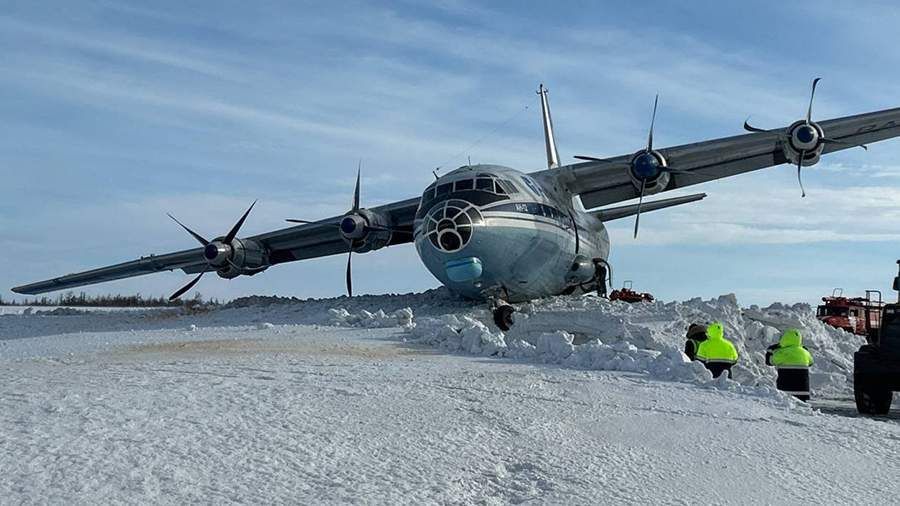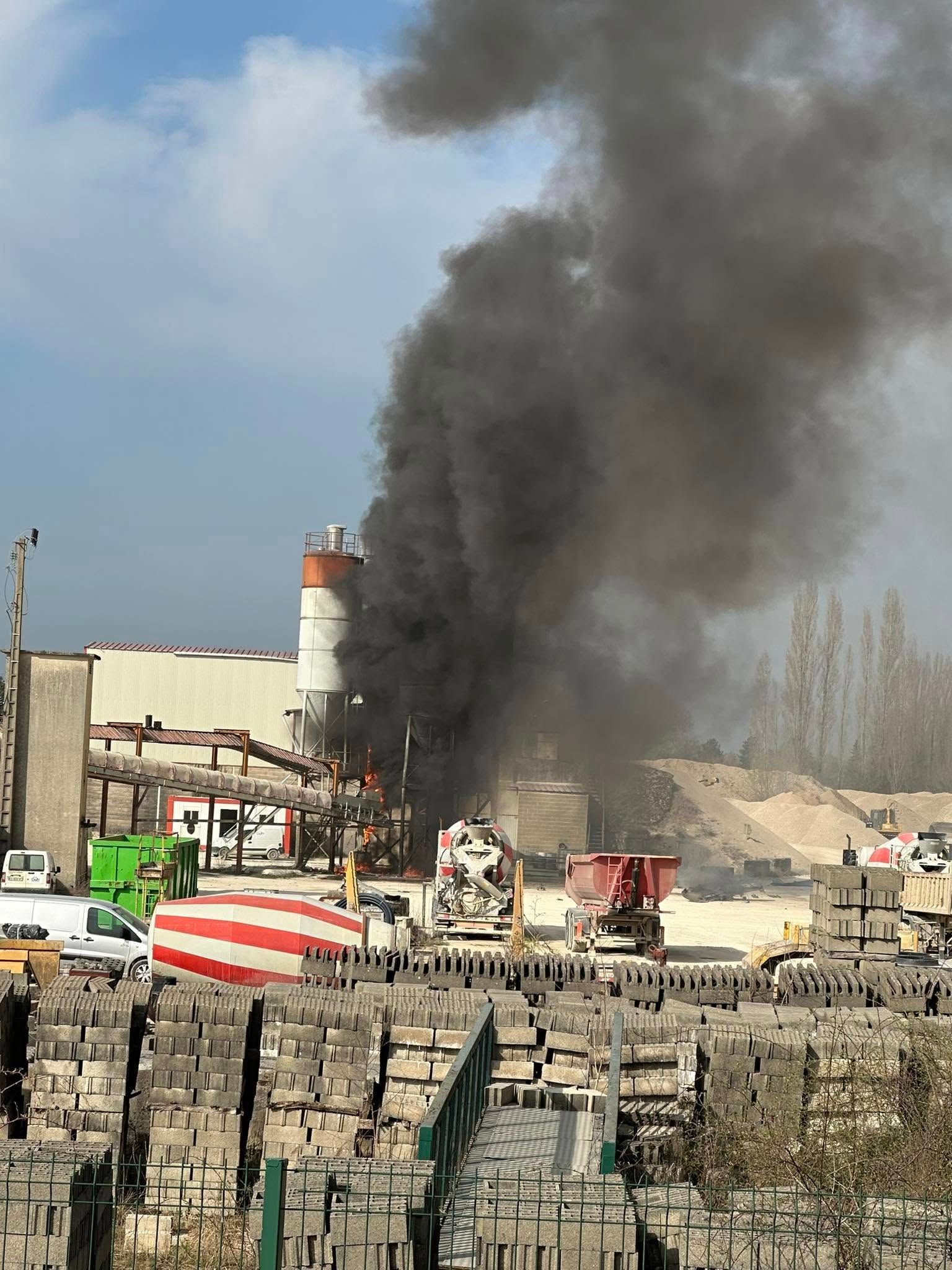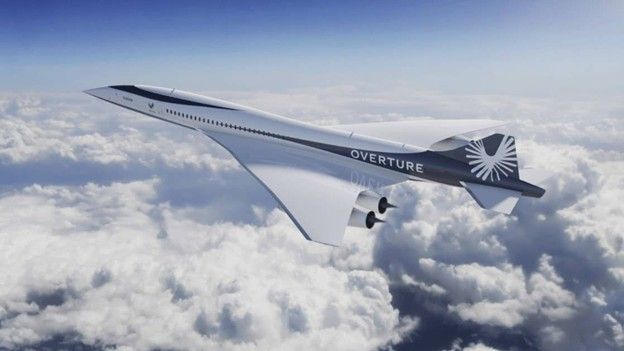ARFF Daily News
Published on:
Wednesday the 26th of March, 2025
One person was hospitalized after the An-12 rolled out of the runway in Novy Urengoy.
After the An-12 aircraft rolled off the runway at Novy Urengoy Airport, there is one victim, the press service of the Yamalo-Nenets Autonomous District Health Department reported on March 26.
"A decision has been made to hospitalize one person, there is no threat to his life," TASS quoted a representative of the department as saying.
An An-12 cargo plane en route from Sabetta made a hard landing at Novy Urengoy Airport earlier that day. During landing, the aircraft tipped over on its left side. There were eight crew members on board, all alive. No fuel spillage has been recorded. The Transport Prosecutor's Office has launched an investigation into the incident.

Two Alpha Jets of the Patrouille de France Display Team Collide During Rehearsal Flight
By Kai Greet
An incident involving two jets belonging to the French Air Force’s aerobatic display team took place during training in Eastern France. Reports say three people ejected and are receiving medical care.
Video footage posted on X/Twitter shows two aircraft in the Patrouille de France formation colliding and breaking apart in flight near Saint-Dizier.
France’s Armed Forces Minister, Sébastien Lecornu, confirmed via social media that the incident had taken place during display rehearsals and that emergency services had been mobilized.
A French Air & Space Force spokesperson source told France24 that two pilots and a passenger were able to eject and were found conscious. They are now receiving appropriate medical care. One of the aircraft collided with a silo at a nearby industrial facility causing a fire to break out. The second aircraft reportedly landed in a canal. No casualties on the ground have been reported.
The incident took place near Air Base 113, which is 4 kilometers west of Saint-Dizier. It houses Dassault Rafale squadrons. Aircraft from this base were involved in the 2024 mid-air collision of two Rafales.
Patrouille de France is the French Air & Space Force’s primary display team, analogous to the Royal Air Force Red Arrows and the Italian Air Force Frecce Tricolori. The team traces its roots back to 1931, and has flown the Dassault/Dornier Alpha Jet trainer aircraft since 1981.
The team are world famous for their annual contribution to the Bastille Day celebrations in Paris, where they perform a flypast creating the red, white, and blue of the French flag in the sky with smoke.
This is a developing story, we will update the article as more details emerge.
https://theaviationist.com/2025/03/25/patrouille-de-france-collision/


ICAO Advances International Supersonic Flight Standards
New noise reduction rule brings Boom Supersonic one step closer to 2030 aircraft certification.
By Caleb Revill
Supersonic aviation pioneers at Boom have assisted the FAA and other regulators around the world in creating new international standards for supersonic flight, according to the company.
The International Civil Aviation Organization (ICAO) agreed to new global supersonic aircraft noise standards in its February meeting, the company said Thursday.
The new standards enacted by ICAO’s recent Committee on Aviation Environmental Protection (CAEP) meeting brings Boom Supersonic one step closer to certifying its supersonic airliner, Overture. The company aims to accomplish this by 2030.
The FAA represented the U.S. at the international meeting in Montreal, Canada, where 33 member countries gathered to support new recommendations.
Last year, Congress passed the FAA Reauthorization Act of 2024, which told the FAA to continue developing international standards for supersonic travel. Boom Supersonic assisted the FAA by providing critical data for its analysis on supersonic aviation.
The company stated in its news release that those standards have now “come to fruition” at the recent CAEP meeting, which takes into account advanced noise reduction procedures to minimize the loud sound of the planes.
Overture is planned to have the same landing and takeoff noise footprint as today’s subsonic long-haul aircraft, according to the release. Unlike the Concorde, the Overture will take off without afterburners—reducing the noise level for take offs.
“Overture’s bespoke engine, Symphony, is a medium bypass ratio turbofan engine, which will be much quieter than Concorde’s turbojet engines with afterburners,” the release stated. “Overture will also have a Variable Noise Reduction System, which automatically manages thrust to reduce noise at take off.”
Boom Supersonic’s XB-1 named “Baby Boom” created a sonic boom that could not be heard on the ground during a test flight demonstration in January 2025.
Boom Supersonic CEO Blake Scholl said in the release that the company’s mission is to deliver supersonic travel to the world in a way that makes people feel excited when a supersonic route comes to their city.
“Thanks to the FAA and Congress, we are leading the way with the international community to adopt these new takeoff and landing noise standards,” he said. “Now that we have proven that we can break the sound barrier without an audible boom on the ground, we are working to update the overland speed limit regulation next.”
https://www.flyingmag.com/icao-advances-international-supersonic-flight-standards/?MailingID=%CAMPAIGNID%&utm_source=hs_email&utm_medium=newsletter&utm_content=text&utm_campaign=FLY-NL-Business-Air&oly_enc_id=3681J3205156A2X

NTSB Final Report: Supernal LLC SUP83-1
The Aircraft Became Inverted At What Appeared To Be A Maximum Pitch Rate
Location: California City, California Accident Number: DCA23LA397
Date & Time: August 3, 2023, 08:03 Local Registration: N183TD
Aircraft: Supernal LLC SUP83-1 Aircraft Damage: Substantial
Defining Event: Loss of control in flight Injuries: 1 None
Flight Conducted Under: Part 91: General aviation - Flight test
Analysis: On August 3, 2023, at 0803 Pacific daylight time (PDT), a Supernal, LLC., SUP83-1 unmanned aircraft system, received substantial damage during a developmental test flight at the manufacturer’s test site. There were no injuries. The aircraft was operating with a FAA Certificate of Waiver or Authorization (COA) 2022-WSA-213-SAC-REV1, under Exemption No. 20050 Regulatory Docket No. FAA-2022-1757. According to the operator/manufacturer the accident occurred during the 3rd flight of the day. The test objective was to observe the behavior of the autonomous RTL (Return to Land) function, triggered by a “low” High Voltage (HV) battery warning.
Prior to the test, the voltage warning limits were adjusted in the ground control station (GCS) to trigger at a higher voltage than the previous flights. The previous test, i.e., the second flight of the day, had tested similar autonomous flight behavior using a hand-held transmitter (HHTX) lost link test point, and the aircraft turned towards home, and performed a “return to landing (RTL)” flight, as had been planned and expected.
On the third flight, at 7:59 AM local time the aircraft lifted off and the pilot translated the vehicle forward from the home position to the west corner of the landing pad and climbed the aircraft to 50 feet. Oscillations were noted, which the pilot said was because of wind, so he lowered aircraft to about 20-30 feet above ground level (AGL) to try and escape the turbulence. Upon reducing the aircraft’s altitude, the oscillations were reduced, but they were not completely gone.
With the extra battery power that remained before the low voltage alarm triggered, the pilot maneuvered the aircraft to the east and turned the left wing into the wind to see if it would further reduce the oscillations, but the maneuver had little effect. Then the pilot maneuvered the aircraft on the east side of the pilot’s station and placed it in a hover in front of the GoPro camera that was recording the flight, about 20 feet AGL, to await the reduction in battery voltage.
It took less than one minute for the low battery warning to trigger the RTL command, which the Ground Control Station Operator (GCSO) recognized and announced. At this point, the Flight Control Computer (FCC) took over control of the aircraft from the pilot’s HHTX and initiated autonomous flight. A few seconds later, the aircraft yawed left to point its nose towards the landing point with its tail pointing to the GoPro camera. Small oscillations were still noticeable, but the aircraft was in full control of itself, without any issues being noted.
After the aircraft turned left, there was a brief hover-hold before the expected aircraft translation was to occur, however at that point the aircraft became inverted at what appeared to be a maximum pitch rate. During the unexpected maneuver the wings stayed fairly level. As the nose pitched up, the aircraft translated backwards and looped over the top of the GoPro. As it was performing the loop it became inverted above the GoPro, and then continued the loop and rapidly descended until it landed directly behind the GoPro. When it landed it bounced and continued another “half-flip” and ended up laying on the ground, inverted.
Due to the low altitude and rapid loop/backflip maneuver, the duration of time from problem-initiation and recognition to actual ground-contact was too short for the pilot to react and attempt to recover control. After the aircraft impacted the ground, the pilot immediately activated the controls on the HHTX to disarm and deactivate the aircraft. During the maneuver, the aircraft’s trajectory was not close to any personnel, and no one was injured.
Upon impact with the ground the landing gear separated and the fuselage was fractured at multiple points. Most notably the canopy broke, and interior avionics tray dislodged, throwing the avionics battery clear of aircraft, through the opening created by the broken canopy. The right lift motor forward pylon also separated from the fuselage.
Postcrash examination and data review revealed that the accident was caused by the failure of a single lift-motor, which led to a loss of control. The motor failure was likely due to a soldering defect that led to the overheating and melting of a wire-solder joint, which led to a subsequent loss of electrical power to the motor.
The accident aircraft, a SUP83-1 unmanned aircraft system, serial number 001, manufactured in 2022, registered to TVPX Aircraft Solutions Inc., and operated by Supernal LLC., was a 25% subscale unmanned test aircraft used for the purpose of researching distributed electric propulsion technologies. The aircraft was configured with six propulsors driven by electric motors that are powered by lithium-ion battery packs. The aircraft can perform vertical take-offs and landings and can be reconfigured to horizontal flight with lift being generated by the wings. It is controlled from a handheld transmitter by a remote pilot and monitored by a PC laptop ground station linked to the aircraft via telemetry radios inside a mobile trailer at the test site. At the time of the accident the aircraft had accumulated about 2.6 hours of flight time on the airframe.
The pilot was an FAA certified private pilot who reported having 112 hours total flight experience and had no experience with the accident aircraft. The test flight was also supported by a visual observer who was stationed near the pilot and one team member who was located inside the ground control station. The pilot, visual observer, and ground control station operator used hands free headsets to maintain communication during the entire event, and they reported no communication issues among themselves.
The test site for this aircraft is a privately owned area near California City, California, within the Hyundai Motor Group’s California Proving Grounds automotive testing facility. Surrounded by unimproved desert, the test area has a large, paved ramp area from which operations are conducted along with the supporting infrastructure appropriate for the operations of the site. Per its COA, SUP 83-1 was permitted to fly within its test area up to 400 feet AGL, remaining clear of both Mojave Air and Space Port/Rutan Field’s (MHV) controlled airspace, and the Edwards Air Force Base (AFB) Restricted Area 2515.
Weather was not a factor in the accident. At the time of the accident, there were clear skies, the visibility was about 10 NM, the temperature was 24 degrees C, and the winds were variable at about 8 knots.
Probable Cause and Findings: The National Transportation Safety Board determines the probable cause(s) of this accident to be -- A loss of control in flight due to a loss of electrical power to one of the lift-motors.
FMI: www.ntsb.gov

Today in History
70 Years ago today: On 26 March 1955 A Pan Am Boeing 377 Stratocruiser ditched in the Pacific Ocean off Oregon, killing 4 occupants; 19 survived the accident.
Date: Saturday 26 March 1955
Time: 11:12
Type: Boeing 377 Stratocruiser 10-26
Owner/operator: Pan American World Airways (Pan Am)
Registration: N1032V
MSN: 15932/27
Year of manufacture: 1949
Total airframe hrs: 13655 hours
Engine model: P&W R-4360-B6
Fatalities: Fatalities: 4 / Occupants: 23
Other fatalities: 0
Aircraft damage: Destroyed, written off
Category: Accident
Location: 56 km W off Oregon, USA - Pacific Ocean
Phase: En route
Nature: Passenger - Scheduled
Departure airport: Portland International Airport, OR (PDX/KPDX)
Destination airport: Honolulu International Airport, HI (HNL/PHNL)
Investigating agency: CAB
Confidence Rating: Accident investigation report completed and information captured
Narrative:
A Pan Am Boeing 377 Stratocruiser ditched in the Pacific Ocean off Oregon, killing 4 occupants; 19 survived the accident.
While en route to Hawaii, the no. 3 engine and propeller tore loose from the wing, causing severe control difficulties. The aircraft was eventually ditched 35 miles off the Oregon coast. The Boeing, named "Clipper United States", sank after 20 minutes in water of about 1600 m deep.
PROBABLE CAUSE: "Loss of control and inability to maintain altitude following failure of the no.3 propeller which resulted in wrenching free no.3 power package."

